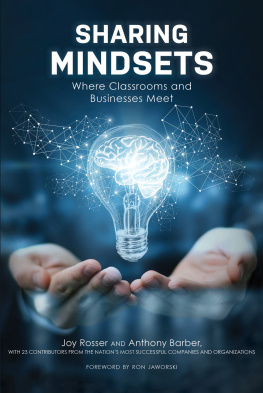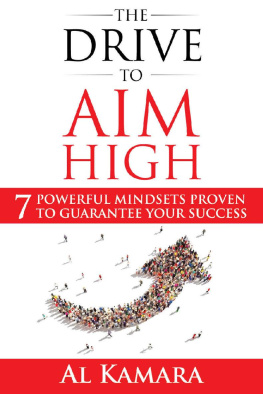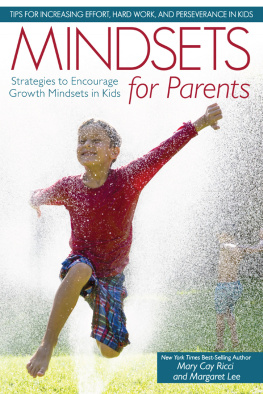Joy Rosser - Sharing Mindsets: Where Classrooms and Businesses Meet
Here you can read online Joy Rosser - Sharing Mindsets: Where Classrooms and Businesses Meet full text of the book (entire story) in english for free. Download pdf and epub, get meaning, cover and reviews about this ebook. year: 2019, publisher: Rowman & Littlefield, genre: Home and family. Description of the work, (preface) as well as reviews are available. Best literature library LitArk.com created for fans of good reading and offers a wide selection of genres:
Romance novel
Science fiction
Adventure
Detective
Science
History
Home and family
Prose
Art
Politics
Computer
Non-fiction
Religion
Business
Children
Humor
Choose a favorite category and find really read worthwhile books. Enjoy immersion in the world of imagination, feel the emotions of the characters or learn something new for yourself, make an fascinating discovery.
- Book:Sharing Mindsets: Where Classrooms and Businesses Meet
- Author:
- Publisher:Rowman & Littlefield
- Genre:
- Year:2019
- Rating:5 / 5
- Favourites:Add to favourites
- Your mark:
- 100
- 1
- 2
- 3
- 4
- 5
Sharing Mindsets: Where Classrooms and Businesses Meet: summary, description and annotation
We offer to read an annotation, description, summary or preface (depends on what the author of the book "Sharing Mindsets: Where Classrooms and Businesses Meet" wrote himself). If you haven't found the necessary information about the book — write in the comments, we will try to find it.
Joy Rosser: author's other books
Who wrote Sharing Mindsets: Where Classrooms and Businesses Meet? Find out the surname, the name of the author of the book and a list of all author's works by series.
Sharing Mindsets: Where Classrooms and Businesses Meet — read online for free the complete book (whole text) full work
Below is the text of the book, divided by pages. System saving the place of the last page read, allows you to conveniently read the book "Sharing Mindsets: Where Classrooms and Businesses Meet" online for free, without having to search again every time where you left off. Put a bookmark, and you can go to the page where you finished reading at any time.
Font size:
Interval:
Bookmark:

Published by Rowman & Littlefield
An imprint of The Rowman & Littlefield Publishing Group, Inc.
4501 Forbes Boulevard, Suite 200, Lanham, Maryland 20706
www.rowman.com
6 Tinworth Street, London SE11 5AL, United Kingdom
Copyright 2020 by Joy Rosser and Anthony Barber
All rights reserved. No part of this book may be reproduced in any form or by any electronic or mechanical means, including information storage and retrieval systems, without written permission from the publisher, except by a reviewer who may quote passages in a review.
British Library Cataloguing in Publication Information Available
Library of Congress Cataloging-in-Publication Data Available
ISBN: 978-1-4758-4061-2 (cloth : alk. paper)
ISBN: 978-1-4758-4062-9 (pbk. : alk. paper)
ISBN: 978-1-4758-4063-6 (electronic)
 The paper used in this publication meets the minimum requirements of American National Standard for Information SciencesPermanence of Paper for Printed Library Materials, ANSI/NISO Z39.481992.
The paper used in this publication meets the minimum requirements of American National Standard for Information SciencesPermanence of Paper for Printed Library Materials, ANSI/NISO Z39.481992.
I have always believed that the key to success stems from ones ability to set lofty goals and work hard to attain them. Be it on the football field or in the business arena, the difference between success and failure can come down to inches, and the desire to prosper can be realized or vanished in an instant. Therefore, it is only with passion and purpose that we make our own opportunities to be highly successful.
Throughout the years, I have noticed that there are various similarities between being an NFL quarterback and also a CEO or leader of a company. Despite the differences in each job task, underlying principles (like the ones mentioned earlier) guide my work each day. And although no one is trying to literally sack me in the board room, competitors exist who would not mind if Jaws hit the carpet one more time.
My friends Joy and Tony, both of whom are educators, have a similar thought process when it comes to their profession and the business world. Like the learning I have experienced, they also believe that crossover skills exist that assist both educators and business leaders.
When they approached me about this book, I thought this endeavor was much needed. Being able to chat with some of my successful colleagues in the business world and use their achievements to assist educators just makes sense. Although I had never heard of a book that combined the successful traits of CEOs and educators, I was fascinated by the prospect of not only assisting educators, but, ultimately, our students.
Sharing Mindsets: Where Classrooms and Businesses Meet is a candid book that devotes itself to practical topics, using relatable stories and anecdotes to illustrate critical points. Within these stories, Joy and Tony offer hands-on suggestions to help the reader find resolutions to common issues facing leadership moments. Both Joy and Tony bring their years of educational experiences to the text; combine that with twenty-three of the most admired CEOs and leaders in America right now, and you have a cant-miss book that any educator and business person can appreciate.
In closing, there are those that say that education is a people business. In my world, any business is a people business, and I invite you to read, think, and improve your ability to be a great, teacher, educator, business person, and leader by embracing the many skills discussed in this tremendous book.
Ron Jaworski
We are so often asked, What is the role of a teacher?
A teachers purpose is to enlighten young minds; to monitor student interactions; to teach a wide array of curricula and skills; to assist parents; to prepare our youth for the next grade, the next level, the next journey; to evaluate achievement and effort; to care deeply enough that it creates care in others; to influence and lead such that the followers become independent thinkers and leaders themselves. The list is infinite and could be a book in and of itself.
However, we are often retorted by others who say that the real-world exists outside of the classroom. In this real realm, the bottom line is production and, well, the bottom line. Often times, this world is presented as a much harder place, one where growth can only be attained on someone elses time. A place where the only thing that matters is the companys success.
Although positioned as the powerful negative of society, there must exist some silver lining in this counter-world. In other words, are schools and businesses that far off? Are we simply preparing students for a place that does not exist? Or perhaps is business being painted in a dark light by those who may not know its light, quality side?
As educators, we thought about these questions, we assumed there had to be some type of middle ground between education and business. Truth be told, since a third grader does not know that she wants to be a sales representative for KIND, and since an eighth grader does not know that he wants to be a manager at his local Chickies & Petes, and since a high school senior does not know that he wants to sell water heaters for Bradford White Corporation, do we not have the responsibility to bridge the gap with the expected and anticipated values of companies and ourselves? In this sense, we must teach and wear our classroom values as they pertain to the greater, larger picture for students who ultimately become employees.
Starting on the turf we know best, the classroom, we identified messages that we have seen create the best teacher from a self-perspective, a relational perspective, and an extension perspective. In other words, how teachers can be best for themselves, for those around them, and for the community.
Then we sought out Philadelphia and Greater Philadelphia leaders and CEOs to support their values and provide the why. Why does it matter that teachers invest relationally in students? Why does it matter that teachers put themselves first so they can be generous for others? Why does it matter that teachers love unconditionally?
This text demonstrates that the educational and corporate messages are the same and that what we expect of ourselves as educators and from students is what is expected at the corporate level (no matter how close to, or far from, the top of that corporation someones role might be). The book aims at getting everyone to feel supported and connected because too often we operate in separate bubbles.
As teachers, we need to invest relationally like Wawa invests in its associates and customers because it creates a unique culture where people want to be. We need to put ourselves first because nurses at Bryn Mawr Hospital do the same for the benefit of their patients. We need to create a climate where loving unconditionally matters because Herrs is successfully doing that every day in its community and within its boardroom.
Broken into three expanding focusesthe Self, the Heart, and the Hands twenty-three perspectives in this book shed light on where classrooms and businesses meet. The wisdom is applicable to anyone in any role of either realm. Every chapter has a character code that the corporate world and education world value. What started out as a text for educators alone has now become a focal point for any employee at any company who wants to be the best he or she can be.
Ultimately, the more we can create students who are college-and career-ready, the more successful they (and the corporate world) will be. The only way we can ever possibly hope to narrow the divide is by building relationships with each other to foster a great truth, a higher purpose, andeventuallyhappier and more successful people, relationships, and organizations.
Font size:
Interval:
Bookmark:
Similar books «Sharing Mindsets: Where Classrooms and Businesses Meet»
Look at similar books to Sharing Mindsets: Where Classrooms and Businesses Meet. We have selected literature similar in name and meaning in the hope of providing readers with more options to find new, interesting, not yet read works.
Discussion, reviews of the book Sharing Mindsets: Where Classrooms and Businesses Meet and just readers' own opinions. Leave your comments, write what you think about the work, its meaning or the main characters. Specify what exactly you liked and what you didn't like, and why you think so.








